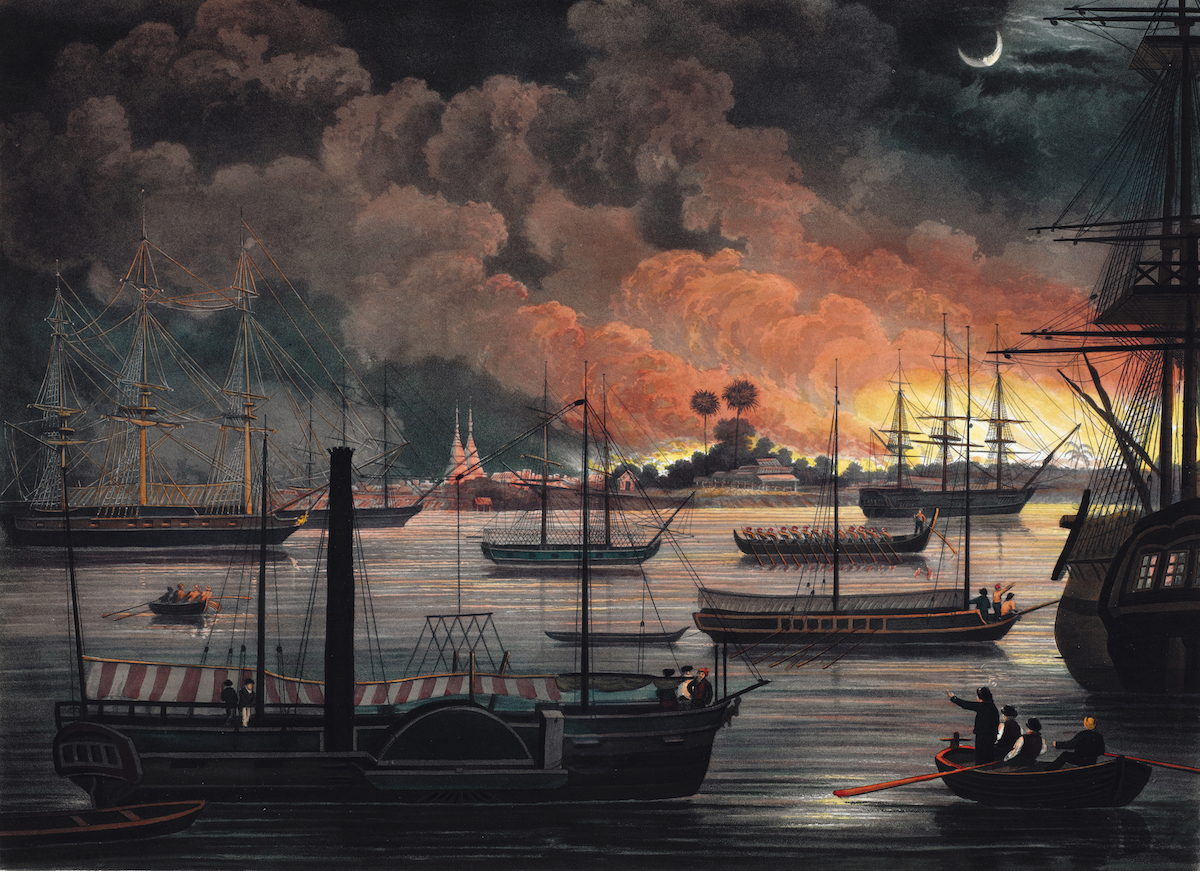The First Anglo-Burmese War: The Beginning of Empire Conflict
History Indian HistoryPosted by NewAdmin on 2025-02-05 08:59:08 |
Share: Facebook | Twitter | Whatsapp | Linkedin Visits: 9

The First Anglo-Burmese War (1824-1826)
In March 1824, the First Anglo-Burmese War began, marking the start of a series of three conflicts between Britain and Burma. At this time, Burma was an independent kingdom ruled by the Konbaung dynasty from Amarapura. The war was primarily sparked by territorial disputes and Britain’s ambitions to expand its influence in Southeast Asia, particularly in the wake of its growing power in India.
British Victory and Treaty of Yandabo
The war ended in 1826 with a decisive British victory, formalized by the Treaty of Yandabo. Burma was forced to cede substantial territories, including Assam, Manipur, and Arakan, and to pay a heavy indemnity. Although Britain had gained ground, the peace was temporary, with tensions remaining between the two powers, setting the stage for the Second Anglo-Burmese War in 1852.
Annexation and the End of the Burmese Monarchy
The final chapter of Burma’s resistance came with the Third Anglo-Burmese War in 1885. This brief, three-week conflict resulted in the defeat of King Thibaw Min, the last Burmese monarch. Following his exile to India, Burma was annexed into British India, marking the end of the Konbaung dynasty and the consolidation of British rule in the region.
Legacy of British Rule in Burma
British rule in Burma lasted until 1948, leaving a profound impact on the country’s political and social fabric. The legacy of these wars—along with the annexation—has contributed to enduring tensions, and the division of Burma into colonial provinces still shapes its modern history and relations with Britain.
Search
Categories
- Sports
- Business
- History
- Politics
- International
- Science & Technology
- Social Issues
- Disaster Management
- Current Affairs
- Education
- Startup Business
- Startup News
- Awards
- Community Services
- Fundraising Events
- Volunteer Services
- Health Initiatives
- Innovations and Initiatives
- In News
- dummybanners
- Awards
- Partners
- Products
- Press Releases
- News
- Fast Check
- South
- సినిమా
- Gallery
- Sunday Chronicle
- Hyderabad Chronicle
- లైఫ్ స్టైల్
- National
- క్రైం
- ట్రెండింగ్
- జాబ్స్
- అంతర్జాతీయo
- బిజినెస్
- రాజకీయం
- బిజినెస్
- సంపాదకీయం
- నవ్య
- చిత్ర జ్యోతి
- క్రీడలు
- జాతీయం
- తెలంగాణ
- తాజా వార్తలు
- మన పార్టీ
- మన నాయకత్వం
- మన విజయాలు
- డౌన్లోడ్స్
- మీడియా వనరులు
- కార్యకర్తలు
- North East Skill Center News
- Government Schemes
- Entrepreneurship Support
- Employment Opportunities
- Skill Training Programs
- Departments
- Investments
- Initiatives
- Resources
- Telangana IT Parks
- Events & Jobs
- Press Releases
- News
- Airport News
- Newtons Laws of Motion
- Karbonn in Business
- Investments in Karbonn
- Company quarterly sales
- Markets
- Auto News
- Industry
- Money
- Advertisements
- Stock target
- Company Updates
- Stock Market
- Company Sales
- Staffing and HR
- Constituency Assembly
- General News
- Srikalahasti Temple
- Bojjala Sudhir Reddy
- Technology & Innovation
- Sports
- Business
- Products
- Industries
- Services & Trainings
- Tools & Resources
- Technology Integration
- Drug Seizures & Arrests
- Telangana Narcotics
- Law & Enforcement
- Rehabilitation
- Nationwide Drug Policing
- Nigeria Seizures
- Global Operations
- Drug Awareness
- Drug Enforcement Tech
- NCB Drug Seizures
- Judicial Crackdown
- India's Surveillance Tools
- Cross-Border Links
- Women Safety
- Cyber Crimes
- Drug Abuse
- Traffic & Road Safety
- Community Connect
- Public Safety Alerts
- Citizen Assistance
- Nellore City News
- Politics & Administration
- Events & Festivals
- Agriculture & Rural
- Business & Economy
- Health & Wellness
Recent News
- Hurricane Erin Causes Beach Closures And Concerns For Coastal Communities
- Judge Frank Caprio Dies At 88, Shared Heartfelt Message Hours Before Passing
- Israel Strikes Hezbollah Targets In Southern Lebanon, Invokes 'Self-Defense'
- Mourners outraged by violent attack at funeral
- CM continues public hearings, says attack won't break her spirit
- Fix waterlogging in government-run schools: Minister urges officials for action
- Mourners condemn attacks at funeral of Brazilian councilwoman
- Philips i9000 Review: Premium shaving, reliable performance